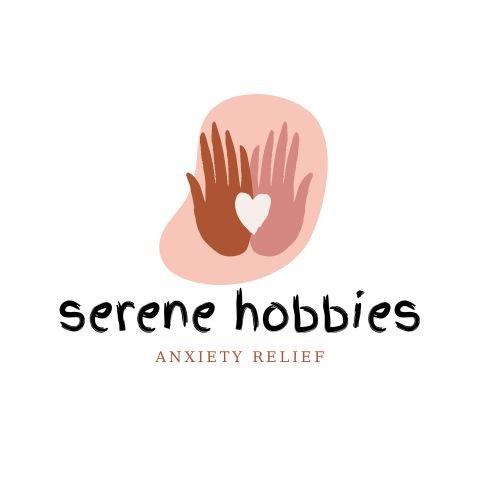Start your group singing journey by selecting uplifting songs with simple melodies that everyone can learn quickly. Create a comfortable, safe space by arranging seats in a circle and establishing ground rules that promote emotional security. Begin each session with gentle breathing exercises to help ground participants and reduce anxiety. Encourage everyone to embrace vocal imperfections, focusing on connection rather than perfection. Build consistent weekly rituals by scheduling regular singing sessions at convenient times. These foundational steps will open the door to a transformative experience where music becomes your collective tool for anxiety management.
Choose Songs That Inspire Connection

Selecting the right songs is essential for creating a supportive group singing environment. When choosing music for anxiety management, opt for pieces that encourage unity and emotional connection among participants.
Look for songs with simple, repetitive melodies that everyone can learn quickly, reducing performance pressure and allowing people to focus on the shared experience.
Choose songs that feature positive, uplifting lyrics or meaningful messages that resonate with your group's experiences. You'll want to include a mix of familiar tunes that bring comfort and new songs that create shared learning opportunities.
Consider incorporating rounds or call-and-response songs, as these naturally foster interaction and help participants feel more connected to each other.
Pay attention to the tempo and complexity of the songs you select. Medium-paced songs often work best, as they're energizing without being overwhelming.
You'll also want to guarantee the vocal range is comfortable for most singers. Start with songs in major keys, as these typically evoke more positive emotions.
As your group becomes more comfortable, you can gradually introduce more challenging pieces that build confidence and deepen the collective experience.
Create A Safe Singing Space
Having the right songs sets the foundation, but the physical and emotional environment plays an equally important role in group singing for anxiety management.
You'll want to select a room with comfortable acoustics – not too echoey or too dampened – where voices can blend naturally without strain. Verify there's adequate ventilation and comfortable seating arranged in a circle or semi-circle so participants can see each other.
Set clear ground rules that promote emotional safety. Make it known that there's no judgment of singing ability, and participants can choose to simply listen if they're not ready to sing. Establish confidentiality guidelines so everyone feels secure sharing vulnerable moments.
Keep the lighting warm but bright enough for people to read lyrics.
Consider the group's size carefully – eight to fifteen people often works best for anxiety management purposes. This range allows for enough vocal support while maintaining intimacy.
You'll also want to minimize external distractions by choosing a location away from high-traffic areas and silencing phones. Remember to maintain a consistent room temperature, as both excessive heat or cold can increase anxiety.
Start With Simple Breathing Exercises

Mindful breathing creates the foundation for effective group singing and anxiety reduction. You'll want to guide your group through basic breathing exercises before attempting any vocal work. Start with simple diaphragmatic breathing, where everyone places their hands on their bellies to feel the expansion and contraction.
Lead your group through these progressive breathing patterns, starting with the basics and moving to more complex exercises:
| Exercise | Duration | Purpose |
|---|---|---|
| Deep Belly Breaths | 2 minutes | Center and ground participants |
| 4-7-8 Pattern | 3 minutes | Regulate nervous system |
| Box Breathing | 4 minutes | Build breath control |
| Staggered Breaths | 3 minutes | Prepare for harmony work |
| Sustained Breaths | 3 minutes | Develop vocal stamina |
Once everyone's comfortable with these breathing patterns, you'll notice the group's collective anxiety level start to decrease. Encourage participants to use these techniques outside group sessions when they're feeling anxious. Remember to keep the pace gentle and avoid rushing through exercises – breathing shouldn't create more stress. If someone struggles, suggest they focus on just one simple pattern until they feel ready to progress.
Embrace Vocal Imperfections Together
A supportive environment for group singing starts with accepting that no one's voice is perfect. When you're singing with others, embrace the natural variations in pitch, tone, and timing that make each voice unique. You'll find that these small imperfections actually create a richer, more authentic group sound.
Don't criticize yourself or others for missed notes or vocal breaks. Instead, focus on how your voice contributes to the collective sound. If you hear someone struggling with a particular passage, offer encouragement rather than correction. Remember that anxiety often stems from fear of judgment, so creating a judgment-free zone is essential.
You can help normalize imperfections by sharing your own vocal challenges or discussing times when your voice didn't cooperate. When someone apologizes for their singing, remind them that perfection isn't the goal – connection and emotional expression are.
Try simple exercises where you deliberately sing off-key together or make silly sounds. These activities help release tension and show that mistakes can be fun rather than frightening. You'll discover that accepting imperfections actually improves your group's overall sound and reduces everyone's anxiety.
Build Weekly Singing Rituals

Creating consistent singing routines helps transform those moments of vocal acceptance into lasting anxiety relief. You'll find that establishing regular times and places for group singing creates a dependable outlet for stress and builds stronger social connections. Make it a priority to schedule weekly sessions that everyone can commit to, whether it's Monday evenings after work or Sunday afternoon gatherings.
| Time of Week | Activity Suggestions |
|---|---|
| Weekday Morning | 15-minute warm-up circles before work |
| Weekday Evening | Hour-long song sharing sessions |
| Weekend Afternoon | Community singing workshops |
Start small with 30-minute sessions and gradually extend the duration as your group becomes more comfortable. You'll want to choose a consistent location that's easily accessible and has good acoustics – perhaps a community center, church hall, or someone's living room. Consider rotating between members' homes to share hosting responsibilities and create variety. Don't forget to document your progress through recordings or a shared journal, as this helps track your group's development and anxiety management journey. Remember to keep the atmosphere casual and supportive, allowing everyone to settle into the routine naturally.
Frequently Asked Questions
Can Group Singing Help With Specific Phobias or Severe Panic Attacks?
Group singing can help ease your phobias and panic attacks by releasing stress-reducing endorphins, building social connections, and regulating your breathing. However, you'll still need professional treatment for severe anxiety conditions.
What Should I Do if Someone Has an Anxiety Attack During Singing?
If someone has an anxiety attack while singing, help them find a quiet space, encourage slow breathing, and stay calm yourself. You can suggest they take a break until they're feeling more comfortable.
Is There an Ideal Group Size for Anxiety-Focused Singing Sessions?
You'll find 6-12 people works best for anxiety-focused singing groups. It's large enough to feel supported but small enough to stay intimate. You won't feel overwhelmed, and everyone can receive individual attention.
How Long Should Each Group Singing Session Last for Optimal Benefits?
You'll get the best results from 45-60 minute sessions. Don't push beyond an hour, as it can be mentally draining. If you're just starting out, try 30-minute sessions and gradually increase the duration.
Do We Need Professional Musical Training to Lead Anxiety Management Singing Groups?
You don't need professional training to lead anxiety management singing groups. Your enthusiasm and basic musical knowledge are sufficient. Just guarantee you're creating a welcoming environment and can maintain simple rhythms and melodies.
In Summary
You'll discover that group singing offers more than just musical enjoyment – it's a powerful way to manage anxiety while connecting with others. By following these simple tips and creating a judgment-free environment, you're building a supportive community through shared breath and song. Make group singing a regular part of your wellness routine, and you'll find strength in raising your voice alongside others.





Leave a Reply